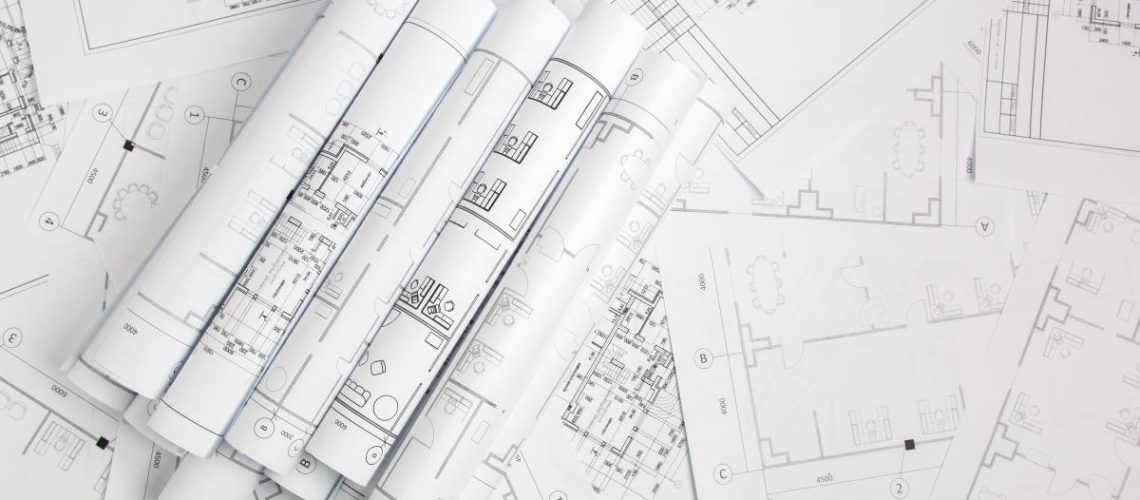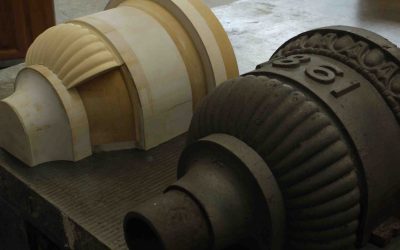


Listed buildings in the UK possess immense cultural, historical, and architectural importance, making them invaluable treasures that offer a glimpse into the nation’s rich heritage. These buildings are safeguarded by stringent laws to preserve their unique character and special interest, thereby allowing future generations to appreciate and learn from these architectural marvels. Protecting listed buildings is about maintaining their physical structure and preserving the stories, craftsmanship, and historical contexts they embody.
The classification of listed buildings in the UK is meticulous and divided into three distinct grades, reflecting the varying significance levels. Grade I listed buildings at the pinnacle deemed of exceptional interest. These structures are rare and are often considered national treasures due to their outstanding historical or architectural value. Grade II* buildings, while slightly less rare, are still of particularly significant interest, often considered essential examples of specific architectural styles or periods. Finally, Grade II buildings, although more common, are still recognised as nationally necessary and are protected to ensure their continued contribution to the country’s historical landscape.
Listing a building involves a thorough assessment by heritage experts who evaluate its historical significance, architectural quality, and integrity. Once listed, any alterations or repairs to these buildings must receive special permission to ensure that any changes are sympathetic to their original character. This protection helps maintain the authentic essence of the buildings, allowing them to remain faithful representations of the eras in which they were constructed.
Preserving listed buildings is crucial for historical and cultural education and sustaining the aesthetic and architectural diversity that enriches communities. These buildings connect to the past, offering insight into historical construction techniques, materials, and design philosophies. Moreover, they often enhance the visual appeal of their areas, contributing to the local identity and sense of place.
Listed Building Consent (LBC) is essential for any alterations, repairs, or replacements that might impact the distinctive character of a listed building. This consent is crucial because it ensures that any proposed modifications comply with preservation guidelines designed to maintain the building’s historical and architectural integrity. While allowing for necessary maintenance and improvements, LBC serves as a safeguard to protect the unique qualities that make these structures significant.
When it comes to guttering, pipes, and rainwater systems, obtaining LBC is particularly important. These elements, though functional, often contribute significantly to the aesthetic and historical value of a listed building. Changing them without proper oversight can lead to the loss of critical architectural features or the introduction of materials and designs that are not in keeping with the building’s original character. By requiring LBC, authorities can ensure that any work on these systems respects the building’s heritage, using appropriate materials and techniques that preserve its historical authenticity.
Furthermore, LBC helps maintain listed buildings’ visual harmony and structural integrity. Guttering and rainwater systems are integral parts of a building’s exterior, and their appearance can significantly influence the overall look and feel of the property. Through the consent process, experts can assess the proposed changes and guide achieving the necessary functional improvements while still honouring the building’s historical significance. This careful balance between preservation and practicality ensures that listed buildings remain beautiful and functional.
In summary, the requirement for Listed Building Consent for alterations, repairs, or replacements to guttering, pipes, and rainwater systems is vital for preserving the unique character of listed buildings. It guarantees that any changes are made with a deep respect for the building’s heritage, adhering to strict preservation guidelines while allowing for essential maintenance and enhancements. This consent process is crucial in safeguarding these critical structures’ historical and architectural integrity, ensuring they continue to be cherished and preserved for future generations.
When proposing alterations, repairs, or replacements to rainwater pipes and gutters on a listed building, it is crucial to deeply consider the structure’s historical significance and architectural integrity. Any changes made to these elements must be meticulously sympathetic to the original design and materials used, ensuring that the unique character of the building is preserved. This often involves preparing highly detailed plans and specifications for approval by the relevant heritage authorities.

Understanding the building’s historical context and architectural features is the first step in navigating these changes. Each component, including rainwater pipes and gutters, plays a role in the building’s overall aesthetic and structural narrative. Therefore, any proposed alterations should aim to maintain or enhance this narrative rather than detract from it. This means using materials that match or closely replicate the original ones and employing techniques that align with the historical construction methods.
The process of approval for these changes is thorough and can be complex. It typically requires submitting comprehensive documentation, including detailed plans, specifications, and sometimes even historical research that justifies the proposed alterations. This documentation helps heritage authorities assess the impact of the changes on the building’s character and ensure that any work carried out is appropriate and sensitive to its heritage value.
Additionally, working with specialists with experience dealing with listed buildings is often necessary. These experts can provide invaluable guidance on the best practices for maintaining the building’s integrity while achieving the desired functional improvements. They can also help navigate the legal and regulatory requirements, ensuring that all work complies with the relevant conservation standards and policies.
In summary, navigating alterations, repairs, and replacements of guttering and pipes on listed buildings requires a deep appreciation for the historical and architectural significance of the structure. It involves careful planning, appropriate materials and techniques, and a thorough approval process to preserve the building’s unique character. Approaching these changes with respect and sensitivity makes it possible to maintain the historical integrity of listed buildings while making necessary updates and improvements.
Maintaining the functionality of rainwater pipes and gutters while preserving the historic fabric of a listed building can be a delicate balancing act, often requiring meticulous attention to detail and adherence to preservation standards. In many cases, the original rainwater pipes, gutters, and hopper heads on listed buildings are bespoke creations intricately designed to complement the architectural style and period of the structure. When it comes to alterations, repairs, or replacements, preserving the integrity of these elements is paramount to maintaining the historical authenticity of the building.
Sometimes, the existing rainwater pipes and gutters may be damaged beyond repair or no longer functional due to age or wear. In such cases, it may be necessary to replicate these bespoke features to ensure the continued functionality and aesthetic harmony of the building. This process involves carefully studying the existing design, materials, and craftsmanship to recreate accurate replicas that blend seamlessly with the original architecture.

Copying and recreating bespoke patterns of pipes, gutters, or hopper heads can be challenging, often requiring skilled craftsmen and specialised techniques.
Architects, conservation specialists, and heritage experts oversee this process, ensuring that the replicas meet the highest craftsmanship and historical accuracy standards.
Furthermore, sourcing suitable materials that match the original specifications can be complex. Traditional materials such as cast iron, lead, or copper may need to be sourced from specialist suppliers specialising in heritage restoration. These materials contribute to the replica’s authenticity and ensure durability and longevity, standing the test of time much like their predecessors.
While the recreation of bespoke patterns may add complexity and cost to the project, it is essential for maintaining the architectural integrity and historical significance of the listed building. By preserving these intricate details, we honour the craftsmanship of past generations and ensure that the building’s unique character remains intact for future generations to appreciate.
The balance between preservation and functionality is crucial regarding rainwater pipes and gutters on listed buildings. Copying and recreating bespoke patterns may be necessary to maintain the project’s integrity, but it ensures that the building’s historical authenticity is preserved for years.
Successful applications for listed building consent often require close collaboration between architects, conservation officers, and building owners. This teamwork is essential to ensure all parties fully understand the building’s historical significance and architectural integrity. By meticulously documenting the historical context and the proposed changes, applicants can demonstrate a comprehensive understanding of preservation principles. This documentation typically includes detailed historical research, architectural plans, and specifications highlighting how the proposed changes will respect and enhance the building’s unique character.
One of the keys to success in these applications is clearly articulating how the proposed alterations will benefit the building while adhering to strict preservation guidelines. This often involves illustrating the necessity of the changes and how they will improve the building’s functionality or safety without compromising its historical integrity. Additionally, successful applications usually showcase traditional materials and techniques that harmonise with the original construction, thereby maintaining the building’s aesthetic and structural coherence.
Despite the potential for success, applicants frequently encounter common challenges. One of the primary challenges is finding the delicate balance between preserving the historical and architectural integrity of the building and incorporating modern functionality. This can include updating essential services such as plumbing and electrical systems or installing modern amenities without altering the building’s historical features. Addressing these needs often requires innovative solutions seamlessly integrating modern technology with traditional design.
Another common challenge is addressing concerns about the visual impact of the proposed changes. Maintaining the building’s external appearance is often a top priority, and any alterations that significantly alter the facade or other visible elements can be contentious. This requires careful planning and design to ensure that any visible changes are subtle and in keeping with the building’s historic character. Engaging with the local community and stakeholders early in the process can also help mitigate concerns and build support for the project.
Successful applications for listed building consent hinge on detailed documentation, a clear understanding of preservation principles, and effective collaboration among architects, conservation officers, and building owners. While common challenges such as balancing preservation with modern functionality and managing visual impact can be daunting, they can be overcome with careful planning, innovative design, and open communication. These efforts ensure that listed buildings’ historical and architectural integrity is preserved while allowing for necessary and sensitive improvements.
– Engage with a conservation architect or heritage specialist at the earliest stage of the planning process to benefit from their expertise and guidance.
– Conduct thorough research on previous applications and familiarise yourself with your area’s specific conservation policies and regulations to understand the requirements and expectations.
– Compile extensive and detailed documentation, including comprehensive historical research, precise architectural drawings, and high-quality material samples, to provide a clear and compelling case for your proposed changes.
– Maintain a flexible and open-minded approach, seeking and considering feedback from conservation officers and heritage organisations to ensure your plans align with preservation standards.
– Explore and evaluate alternative solutions that maintain the building’s historical character while effectively addressing its functional needs, demonstrating a commitment to preservation and practicality.
Listed building consent is vital in protecting and preserving the rich cultural heritage of the UK. It ensures we carefully balance preserving historical integrity and addressing practical considerations for modern use. By adhering to this process, we can guarantee that these historic buildings will continue to inspire, educate, and enrich our communities for countless generations. This careful stewardship honours and respects our past and provides a lasting legacy for the future, allowing these architectural treasures to remain a source of pride, cultural significance, and inspiration indefinitely. Through diligent efforts and a commitment to preservation, we ensure that these remarkable structures continue to stand as enduring symbols of our shared history and heritage.
Yes, any alterations or replacements to rainwater pipes and gutters on a listed building require consent, as they may affect the building’s unique character.
When proposing changes to rainwater pipes and gutters on a listed building, it’s essential to consider the historical significance, architectural integrity, and material compatibility.
Yes, you can undertake temporary repairs to prevent further deterioration, but it’s essential to document these repairs and obtain consent for any permanent alterations.
Occasionally, grants or tax incentives may be available to repair and maintain listed buildings, including rainwater pipes and gutters. It’s advisable to check with local heritage organisations or government agencies for more information.
The timeframe varies depending on the proposal’s complexity and the relevant authorities’ responsiveness. It’s advisable to allow several months for the process.
You can apply for retrospective consent to repair rainwater pipes and gutters on a listed building in certain circumstances. However, it’s advisable to consult with conservation experts before proceeding.

When preserving the past and navigating listed building consent in the UK, our comprehensive site visits, surveys, and expert advice ensure that rainwater systems, gutters, and pipes meet stringent preservation standards. We conduct thorough site visits to assess the building’s historical significance and architectural integrity. Our surveys meticulously document the existing conditions of rainwater systems, identifying areas that require attention while respecting the building’s unique character. Our heritage specialists provide detailed recommendations and strategic advice tailored to the specific needs of your project. They ensure that any proposed changes are sympathetic to the original design, using appropriate materials and techniques that align with conservation principles. Working closely with conservation officers and heritage organisations, we help navigate the complexities of listed building consent, facilitating a smooth approval process. This collaborative approach ensures that the functional needs of the building are met without compromising its historical essence, thereby safeguarding these architectural treasures for future generations.